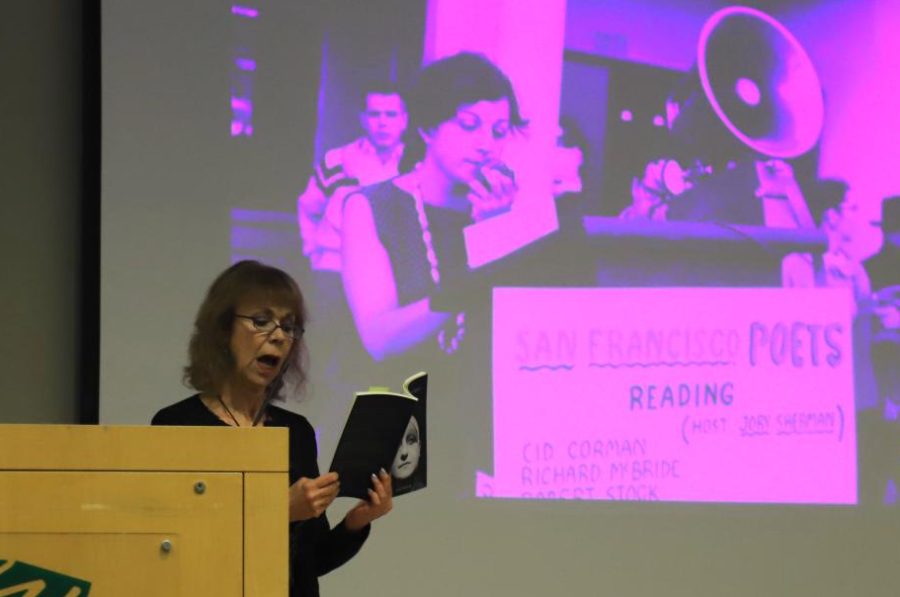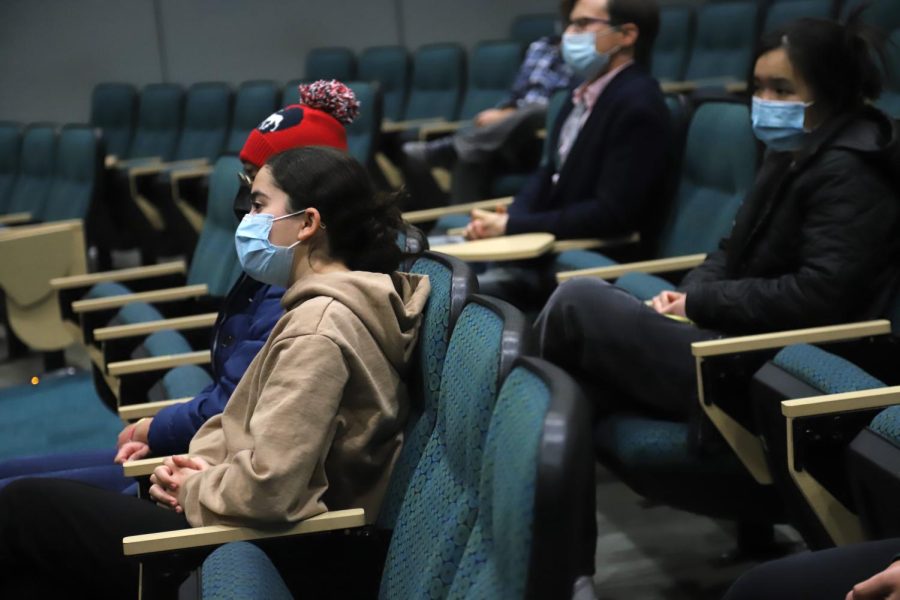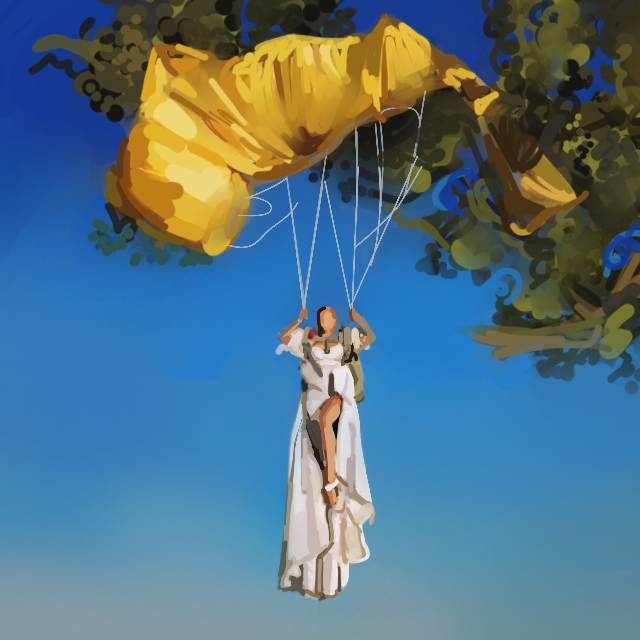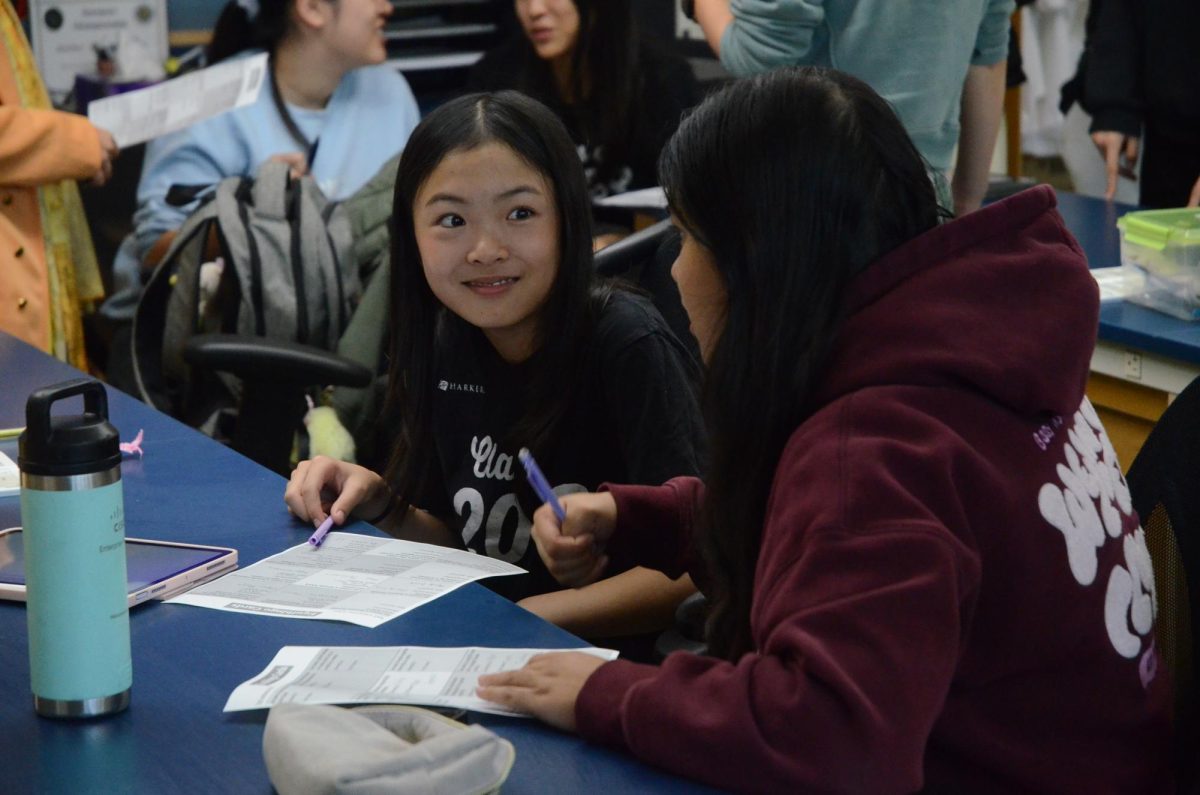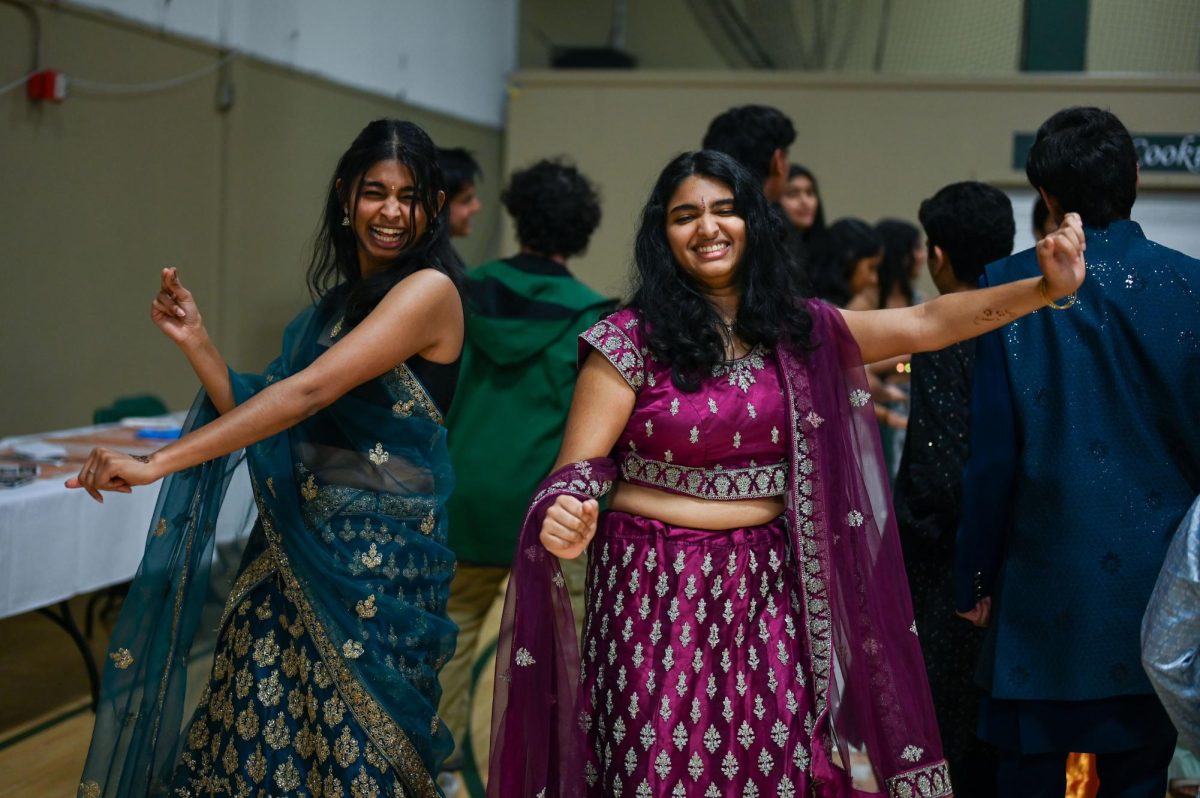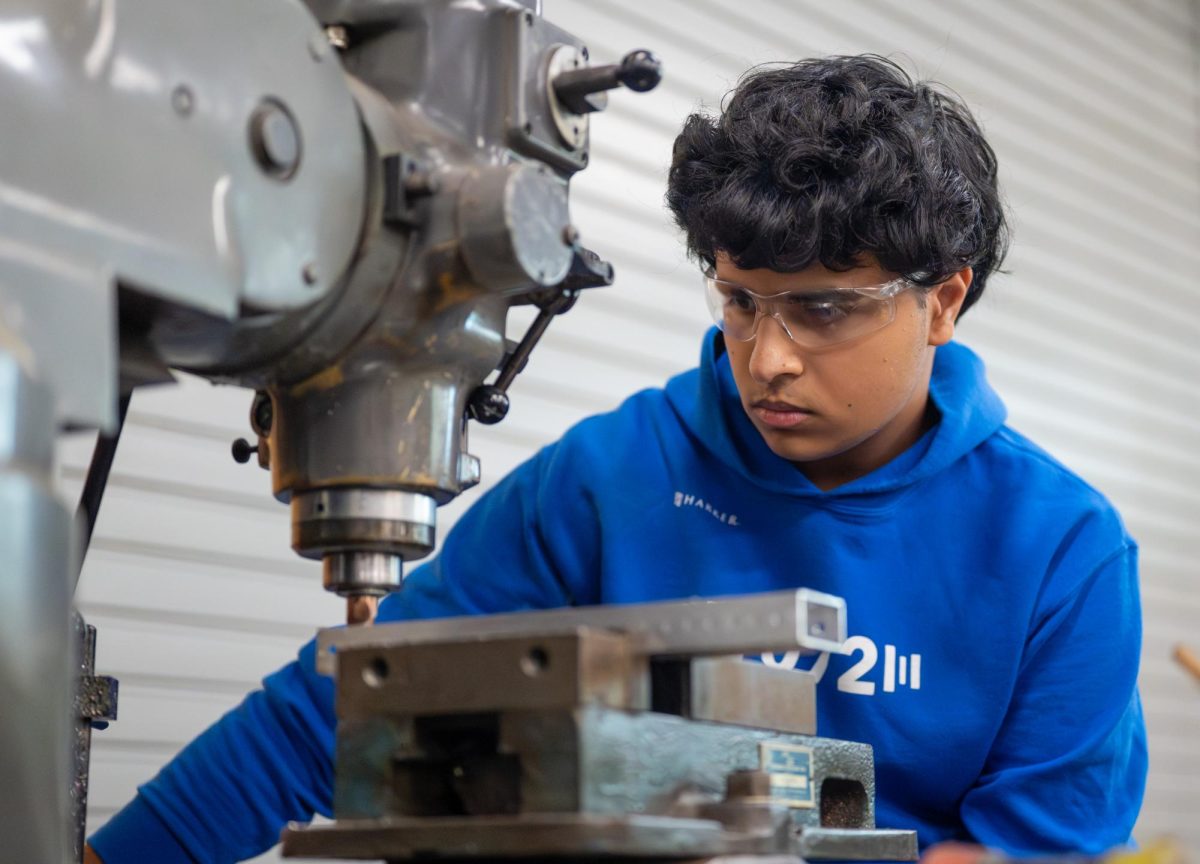Beat Museum on Wheels teaches about Beat Generation at upper school visit
Estelle Cimino, who visited the upper school campus with the Beat Museum on Wheels, reads a poem from Beat Generation author Ruth Weiss at their speaker event on Feb. 24. The “BeatMobile” came to the campus for the day to educate about the Beat Generation authors of the 1950s.
March 4, 2022
The Beat Museum on Wheels visited the upper school campus on Feb. 24 and stayed throughout the day, setting up a truck outside of Manzanita where students could explore the Beat Generation and also delivering a presentation to around a dozen students and faculty on the literary movement during lunch.
The Beat Museum on Wheels, a traveling exhibition that teaches about the Beat Generation and their literary movement of the 1950s, began its second journey this year, 15 years after its first tour. The traveling museum, currently run by couple Jerry and Estelle Cimino, brought its “Beatmobile” to the upper school campus for their second stop of the tour. The Cimino’s also run and own the physical Beat museum in San Francisco.
According to their website, the museum strives to promote “the spirit of the Beat Generation” and to inform the current generation about the Beats’ impact on America and the world as well as the importance of their literature and words.
“[We present on] how [the Beat movement] came out of World War II, and how, inspired by jazz, spirituality and nonconformity, it captured the wayward energy and restlessness of youth in the postwar period and created a renaissance of American art, literature, music, values and ideas,” the website says.
Throughout the day on Feb. 24, students could speak to the Cimino’s outside their truck, which featured a large plastered photo of three Beat Generation authors on one side and contained photos and more information about the movement inside. In a presentation during lunch in the Nichols Auditorium, Jerry Cimino spoke about the history and impact of the Beat Generation, and both Jerry and Estelle Cimino read the works of notable poets of the generation, such as their personal friend Ruth Weiss. They ended the presentation with a question and answer session, with students and teachers alike offering their thoughts and posing questions.
Starting in the mid-20th century, a new generation of writers developed a literary movement that diverted from traditional conventions of the time, eventually becoming known as the “Beats.” A group of these writers concentrated at San Francisco’s North Beach.
Rhiannon Sikand (10), who has an interest in the Beat Generation, attended the lunch presentation and was glad to have the opportunity to speak with people who aimed to spread the legacy of the Beat authors.
“It was really interesting because I forgot that there were still people who experienced the lives of these Beat poets,” Rhiannon said. “They knew Ruth until she died, so it was really interesting hearing them talk about their personal experiences. I didn’t realize that there were still people who had known these Beat poets, and they weren’t just a legacy or a memory: there were people who had experienced the movement in real time.”
Last semester, upper school English teacher Charles Shuttleworth taught a semester-long senior English elective on the Beat Generation and one of its most famous writers, Jack Kerouac. In the class, the seniors also studied texts from various other Beats. After Shuttleworth visited the actual museum in San Francisco in June and heard that they were planning a cross-country trip, he invited Jerry Cimino to stop by Harker.
The Beat Museum on Wheels will continue its journey throughout this summer along the West Coast and will move to the East Coast after September.


















![“[Building nerf blasters] became this outlet of creativity for me that hasn't been matched by anything else. The process [of] making a build complete to your desire is such a painstakingly difficult process, but I've had to learn from [the skills needed from] soldering to proper painting. There's so many different options for everything, if you think about it, it exists. The best part is [that] if it doesn't exist, you can build it yourself," Ishaan Parate said.](https://harkeraquila.com/wp-content/uploads/2022/08/DSC_8149-900x604.jpg)




![“When I came into high school, I was ready to be a follower. But DECA was a game changer for me. It helped me overcome my fear of public speaking, and it's played such a major role in who I've become today. To be able to successfully lead a chapter of 150 students, an officer team and be one of the upperclassmen I once really admired is something I'm [really] proud of,” Anvitha Tummala ('21) said.](https://harkeraquila.com/wp-content/uploads/2021/07/Screen-Shot-2021-07-25-at-9.50.05-AM-900x594.png)







![“I think getting up in the morning and having a sense of purpose [is exciting]. I think without a certain amount of drive, life is kind of obsolete and mundane, and I think having that every single day is what makes each day unique and kind of makes life exciting,” Neymika Jain (12) said.](https://harkeraquila.com/wp-content/uploads/2017/06/Screen-Shot-2017-06-03-at-4.54.16-PM.png)








![“My slogan is ‘slow feet, don’t eat, and I’m hungry.’ You need to run fast to get where you are–you aren't going to get those championships if you aren't fast,” Angel Cervantes (12) said. “I want to do well in school on my tests and in track and win championships for my team. I live by that, [and] I can do that anywhere: in the classroom or on the field.”](https://harkeraquila.com/wp-content/uploads/2018/06/DSC5146-900x601.jpg)
![“[Volleyball has] taught me how to fall correctly, and another thing it taught is that you don’t have to be the best at something to be good at it. If you just hit the ball in a smart way, then it still scores points and you’re good at it. You could be a background player and still make a much bigger impact on the team than you would think,” Anya Gert (’20) said.](https://harkeraquila.com/wp-content/uploads/2020/06/AnnaGert_JinTuan_HoHPhotoEdited-600x900.jpeg)

![“I'm not nearly there yet, but [my confidence has] definitely been getting better since I was pretty shy and timid coming into Harker my freshman year. I know that there's a lot of people that are really confident in what they do, and I really admire them. Everyone's so driven and that has really pushed me to kind of try to find my own place in high school and be more confident,” Alyssa Huang (’20) said.](https://harkeraquila.com/wp-content/uploads/2020/06/AlyssaHuang_EmilyChen_HoHPhoto-900x749.jpeg)



